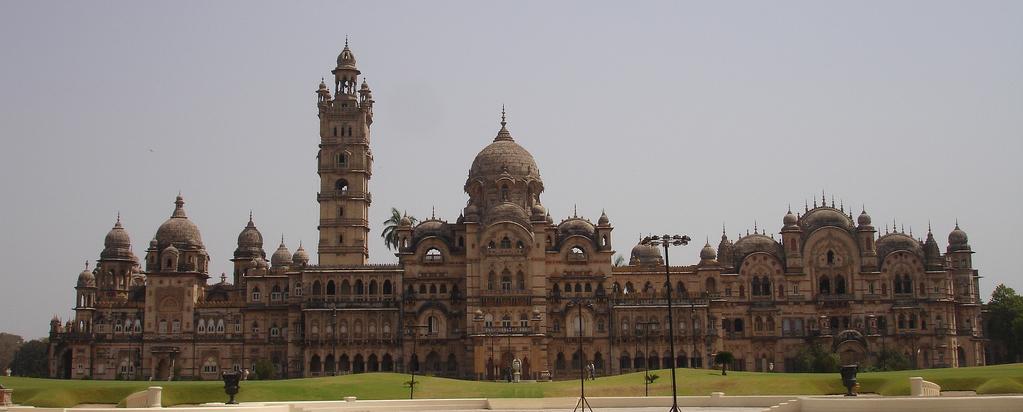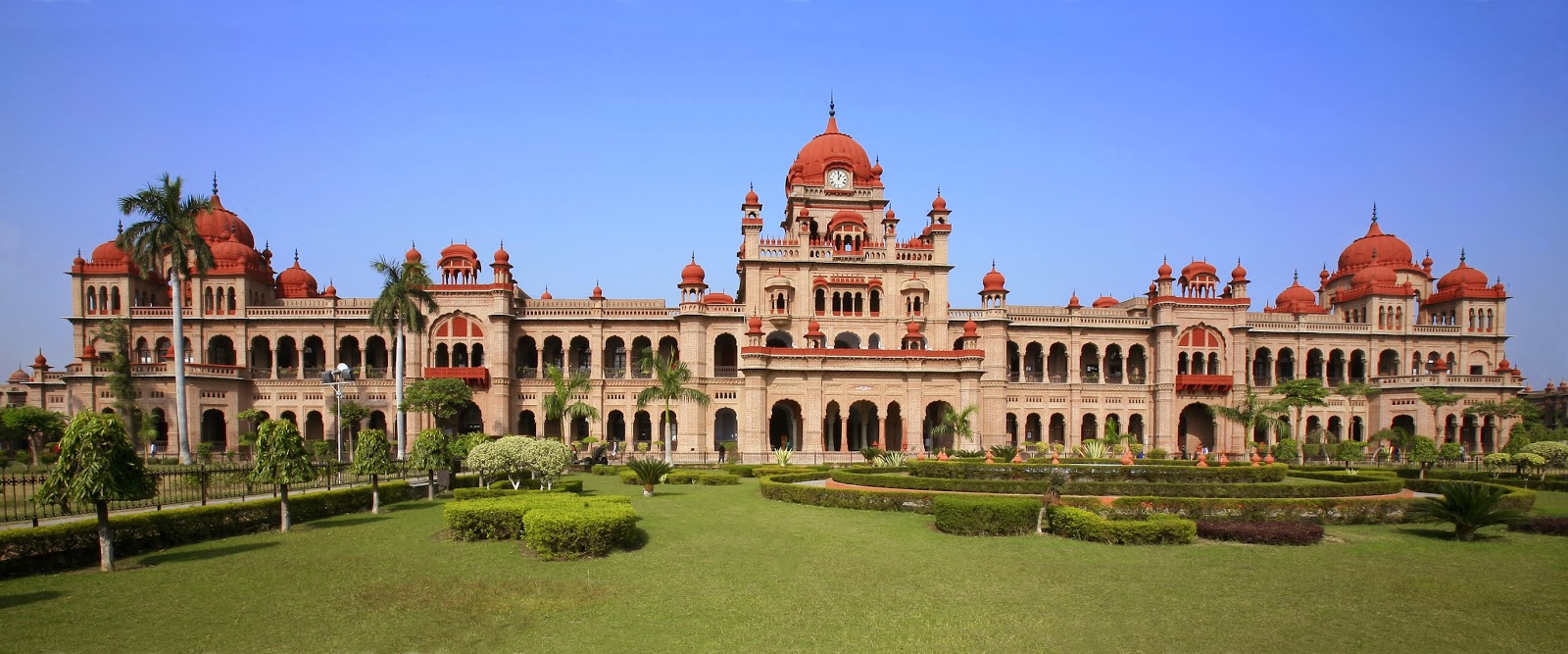Every building that the British left behind tells us something about their colonial journey in India.
India is dotted with many old British buildings – some grand and iconic like the Gateway of India, and some odd and quirky like the current Vivekananda memorial in Chennai that was once a British Ice House!
[Detour: Watch this short video about one quirky British building that still stands, but in a very different form from when it was first built]
These buildings tell us a lot about the period they belonged to. Look a bit closer and you will spot a pattern that strongly corresponds to the changing status of the British in India. Their buildings were a reflection of the fears, ambitions and the practical concerns that these men faced at that point in time.
Many Indians see British colonial history as: “They came, they saw, they looted” (apologies to Julius Caesar). But to be fair, the British left behind some remarkable institutions, and some beautiful monuments. This post explores British approach towards monument-building, during their long stay (1612- 1947). To simplify things, let’s divide this period into three phases. The phasing is not watertight and is merely an arbitrary device for understanding a long continuum.
Phase 1 (1612-1749)
In 1612, the British managed to get a licence from the Mughal Emperor to trade in India. They were small businessmen trying to make a fast buck in a brand new market. They had no territorial ambitions. And they knew that they were no match for the mighty Mughals, anyway. Building monuments was really not on their agenda. All they built were wharfs and warehouses to handle their business. They also built some fortifications mostly to ward off other European rivals, and some churches for their own solace. And many of these were over-engineered into lasting monuments. For instance, the St. Mary’s Church in Chennai, built in 1680, is the oldest active Anglican Church in the Eastern hemisphere, and the Fort St. George built in 1640, still has a military garrison.


Phase 2 (1750- 1857)
By the 1750’s, the British had become a stronger power in India. Their European rivals here – the Portuguese, the Dutch and the French, had weakened considerably, and the Mughal Empire itself was crumbling. The British now owned a vast army of Indian soldiers and it was a tremendous psychological and practical advantage. They were no longer meek traders, but ambitious raiders. Following their territorial ambitions, they started investing in infrastructure. Their goods and armies had to be moved around, and the natives had to be impressed by their power. To make travel faster, the British introduced Railways in India.
Gigantic Town Halls and administrative buildings were built, broadcasting the ‘superiority’ of British rule from the roof-tops.

Churches became more ornate. And they invested in unlikely luxuries like warehouses for storing blocks of ice all the way from America! At that time, British investments in India were, both emotionally and materially, large enough to merit huge monument building.

Phase 3 (1858-1947)
In 1857, the British ruthlessly crushed the Indian Mutiny and the very next year, Queen Victoria declared herself Empress of India. India became the British Empire’s most prized possession. British architects now unleashed their full creativity on India, designing beautiful Universities, Hospitals, Railway Stations, Courts and Museums. They had even evolved a new fusion architectural style called the Indo-Saracenic – a mixture of Hindu, Islamic and European styles of architecture. Guess who loved it, besides the British? The Indian kings! Most of the palaces constructed around that time are Indo Saracenic.



In the ‘old’ quarter of some Indian Colonial cities, you can still find British Monuments from all 3 phases. And there is no denying that these monuments enrich the place by their presence, and enthrall those who take the effort to uncover their stories.


Did you like this article? You may like to read these too:
Read all about it in this article:
Mind your language The British didn’t just leave behind monuments in India, they left a more subtle legacy too: the English language.
The Yale controversy The fascinating story of a notorious British Governor in Madras who lent his name to the renowned Yale University.
The great wall of thorns The story of a mammoth and completely mad British project
Would you like to explore more stories of Indian monuments?
Sign up for our award-winning walking tours, many of which take you through fascinating stories behind Indian landmarks and monuments.
The British Blueprints trail in Chennai and The Bombay Story walking tour in Mumbai cover a lot of British colonial history.
The French Connections trail is a walking tour in Pondicherry that explores French colonial history.
Image Attribution
1. St. Mary’s Church, Chennai – By Neetesh Photography
2. Asiatic society, Writer’s Building in Calcutta – By http://www.wmcarey.edu/carey/wmward/Image%20Lib%20html/writers.html, Public Domain, https://en.wikipedia.org/w/index.php?curid=4247419
3. St John’s Church, Calcutta – By Antaroop2010 – Own work, CC BY-SA 4.0, https://commons.wikimedia.org/w/index.php?curid=74620184
4. Mysore Palace – By Deepak B Jain – Own work, CC BY-SA 4.0, https://commons.wikimedia.org/w/index.php?curid=51112507
5. Laxmi Vilas Palace, Vadodra – By I, Bracknell, CC BY-SA 3.0, https://commons.wikimedia.org/w/index.php?curid=2386722
6. Khalsa College, Amritsar, Punjab – By Joe mon bkk – Own work, CC BY-SA 4.0, https://commons.wikimedia.org/w/index.php?curid=38445839
7. Victoria Terminus, Mumbai – By University of Houston – University of Houston Digital LibraryIndia Illustrated (Magazine)Franzheim Memorial Library Collection, Public Domain, https://commons.wikimedia.org/w/index.php?curid=11941424
8. Victoria Memorial, Calcutta – By PixaBay, https://pixabay.com/photos/victoria-memorial-india-kolkata-2394784/
Archives
- January 2022
- December 2021
- November 2021
- August 2021
- March 2021
- February 2021
- January 2021
- December 2020
- November 2020
- October 2020
- September 2020
- August 2020
- April 2020
- March 2020
- February 2020
- January 2020
- November 2019
- October 2019
- September 2019
- August 2019
- July 2019
- June 2019
- August 2017
- February 2017
- January 2017
- October 2013
Featured Posts
- Tales that pots tell: Keeladi excavations AUGUST 18, 2021
- The Last Grand Nawab: Wallajah FEBRUARY 10, 2021
- How Tej Singh became Raja Desingu of Gingee FEBRUARY 5, 2021
- How Shahjahan seized the Mughal throne JANUARY 28, 2021
- Alai Darwaza – Qutub Minar Complex, Delhi NOVEMBER 21, 2020
- Marking History through British buildings NOVEMBER 17, 2020
- The last great queen of Travancore NOVEMBER 7, 2020
- Brahmi and the evolution of scripts OCTOBER 15, 2020
- The Cambodian King of Kanchipuram OCTOBER 14, 2020
- James Prinsep – the man who read the writing on the wall OCTOBER 10, 2020
- Mariamman – the Village Goddess who travelled SEPTEMBER 30, 2020
- Misnamed Monuments of Mamallapuram SEPTEMBER 28, 2020








